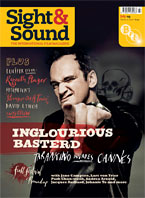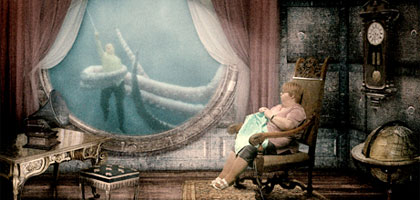Primary navigation

Slovakia 2008

Reviewed by Sophie Mayer
Our synopses give away the plot in full, including surprise twists.
Slovakia, 2005. The film follows three years in the lives of four blind people: Peter, a music teacher and composer who shares his life with Iveta; Miro, a Roma playboy who lives at home with his mother and is pursuing partially sighted Monika despite her parents' disapproval; Elena, who is anxiously expecting her first child; and Zuzana, who has just started at an integrated school but finds herself looking for love and friendship online.
We see Peter and Iveta's life together. We also see Monika getting together with Miro, becoming pregnant and being forced to choose between him and her family. Elena gives birth. Zuzana sets out for a date with an instant-messaging friend. An interwoven epilogue revisits all four stories, showing Peter's successful concert with a children's choir, Miro and Monika's continuing passion, Elena's joyous motherhood, and Zuzana happily chatting online.In the intriguing documentary Blind Loves, Slovakian director Juraj Lehotsky explores and undoes the associations of blindness in western culture, where it's metaphorically used to describe lack of observational power as a moral failing, or - as in the phrase 'love is blind' - as a moral good. Lehotsky originally conceived his film as a feature project about a blind girl living on the margins of a town, searching for love. As he researched the idea, his Children of a Lesser God-style project gave way to a documentary approach, for which he spent three years following four blind subjects - Peter, Miro, Elena and Zuzana - as they search for connection and dignity. As well as patience, Lehotsky brings - or learns from his subjects - an openness to experiencing a world rendered unfamiliar, creating a film in which sound and touch assume more importance than the cinematically privileged sense of sight.
Lehotsky and his cinematographer Juraj Chlpík discover a world unseen by the sighted: the visible world, which has long been considered cinema's profound and precise concern, is transformed into a flimsy covering beneath which mysterious depths are explored. Lehotsky makes this explicit in an animated sequence in which music teacher Peter travels under the sea and encounters an octopus; as the two discover each other through touch, Peter's partner Iveta glides by in a submarine, listening to Jules Verne on the radio and knitting Peter a beautiful sweater as complex as the classical music he plays on the piano.
Even this whimsical sequence shares the film's dry and lovely prosaic observational tone, as Peter emerges from the sea to the shock of a fisherman whose stares pass over the soaking-wet man. That dissonance between the experience of the viewer, who absorbs knowledge from the visual world, and that of the subjects, is given piquancy by details within the frame - the extreme dexterity of Iveta's knitting fingers, for example - drawing our attention to the sonic and haptic dimensions of the film, asking us to turn visual images into touch and sound.
The film thus inverts our over-reliance on the visual, which is underlined by our introduction to expectant mother Elena, whose ultrasound proves an alienating rather than connective experience. As in cinema, so in medicine: seeing has become believing even when the visual image is composed from sound waves. Unlike Peter in his underwater world, Elena can't touch the mediated image. In a moving twist, she is later shown taking her son (who is sighted) to the cinema, where he narrates the animated film for her. In his narration, the private language of parent-child communication takes precedence over the banal content of the cartoon. Cinema becomes a space of closeness and communion.
The film's four characters never meet, and their stories are told serially, but each creates connection. Using the familiar tools of mediated modernity in resistant ways, Peter entertains Iveta with his commentary on TV ski-jumping, Miro uses a small voice-recorder to send his girlfriend Monika love 'letters', and teenage Zuzana delights in online chatting and digital music. Having her nails done in anxious preparation for her first date with an instant-messaging friend, Zuzana comes closest to conventional romantic narrative, but the justness of mutual love brings us close to all the characters. The racism that Miro, who is Roma, encounters from Monika's parents is rendered doubly absurd in an unsighted world.
While even blind love is threatened by skin colour, the people in this film show that the impairment of one physical capacity doesn't disable a human being. Zuzana's dream of travelling to - and seeing - the moon captures both the imaginative resilience of the film's subjects and the privileges (and privileging) of sight. Blind Loves is alight with delicate images that convey the poignancy of being unsighted. Early on, we see Peter practising the piano as a bird flies in through an open window and perches in front of him. The synaesthetic matching of the bird's flight and Peter's playing invites us to recognise that cinema can lead us to see, like the characters, with our ears and our hearts.